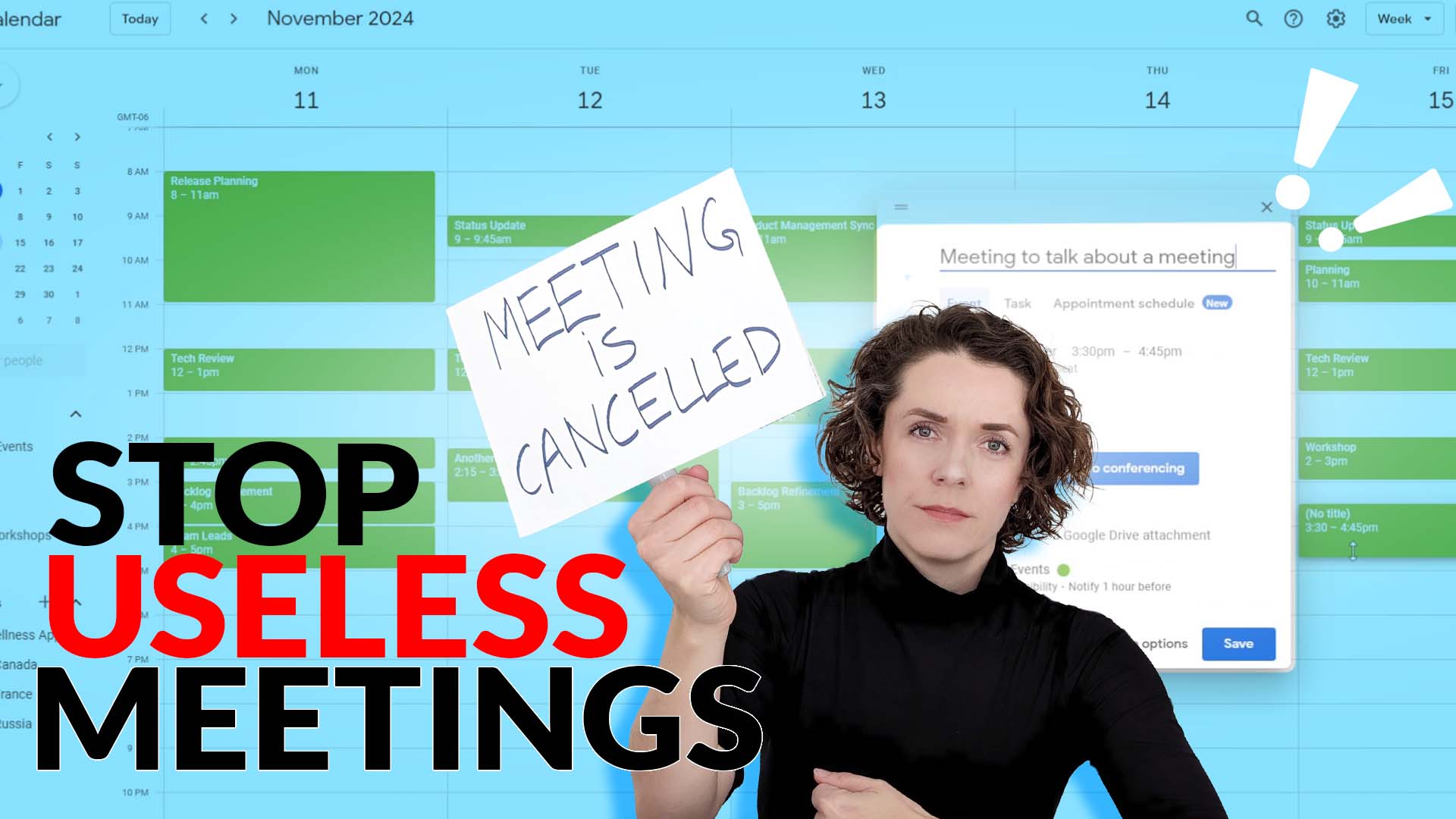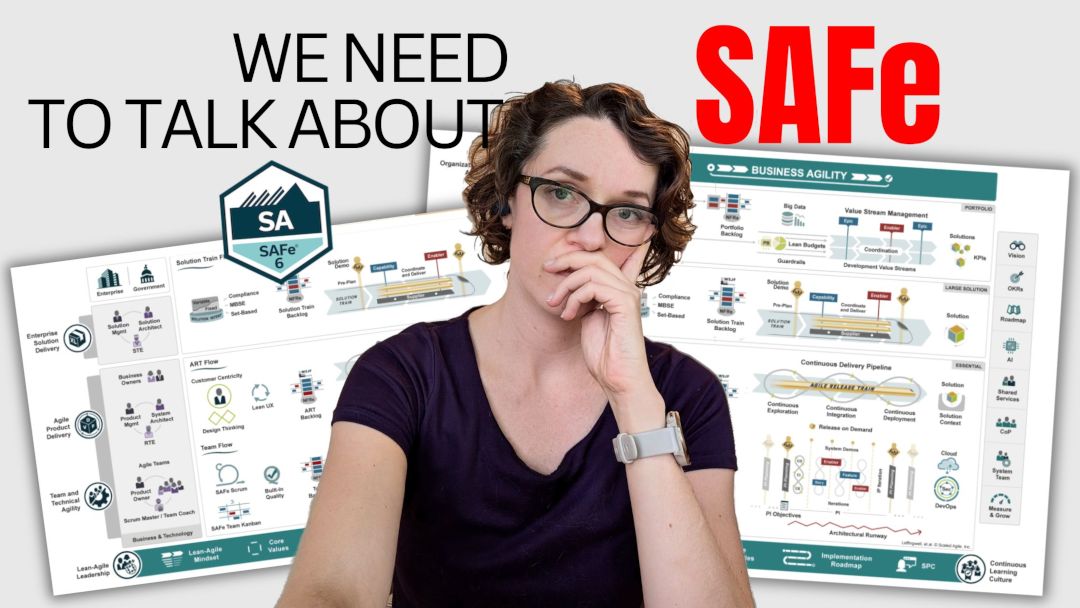I passed the SAFe 6 Agilist Certification, and I need to talk about it.
SAFe has some bad rep in the Agile community. There are tons of articles, memes, and LinkedIn posts about it.
“SAFe isn’t Agile”. So is it true? Or are people just scared that it’s taking over the industry? Is it taking over the industry?
Short answer: I don’t think that SAFe isn’t Agile. But I do have beef with it.
Let me clarify.
While searching for new opportunities, I decided to hit the books again and went for the SAFe certification. I attended a class some time ago but never had enough motivation to pass the exam.
So I did it this time. And I had to do it three times since my original class was on SAFe version 4, and now we’re on version 6.
It means that I saw the framework’s evolution while studying.
In its essence, SAFe is aligned with Agile values and principles
My first conclusion is that the overall premise of SAFe, its values and principles, what it teaches you about teams and leadership, is quite Agile.
Honestly, they tick all the boxes.
The 10 SAFe principles are great. Well, I mean the ones that are immediately obvious. I’ll talk about it later.

They talk a lot about self-organizing teams and Agile leadership. When you get into the details, I agree pretty much with everything they say, and everything the framework stands for. They put a big focus on a customer-centric approach to product development. It’s all about collaborating with the customer and understanding their needs.
They also talk a lot about creating collaboration between
I guess that +1 point for SAFe. But once you start getting into more details, this is where it all goes sideways.
Let’s just glance at the framework itself. This is the essential piece:

Now, we’re already struggling to get people to understand the original Scrum:

Even if you add some extra explanation like values and pillar to it, the Scrum Framework graph looks quite simple and easy to grasp. The Scaled Agile Framework is not. Cause they have THREE more levels to their graph:
Large solution:
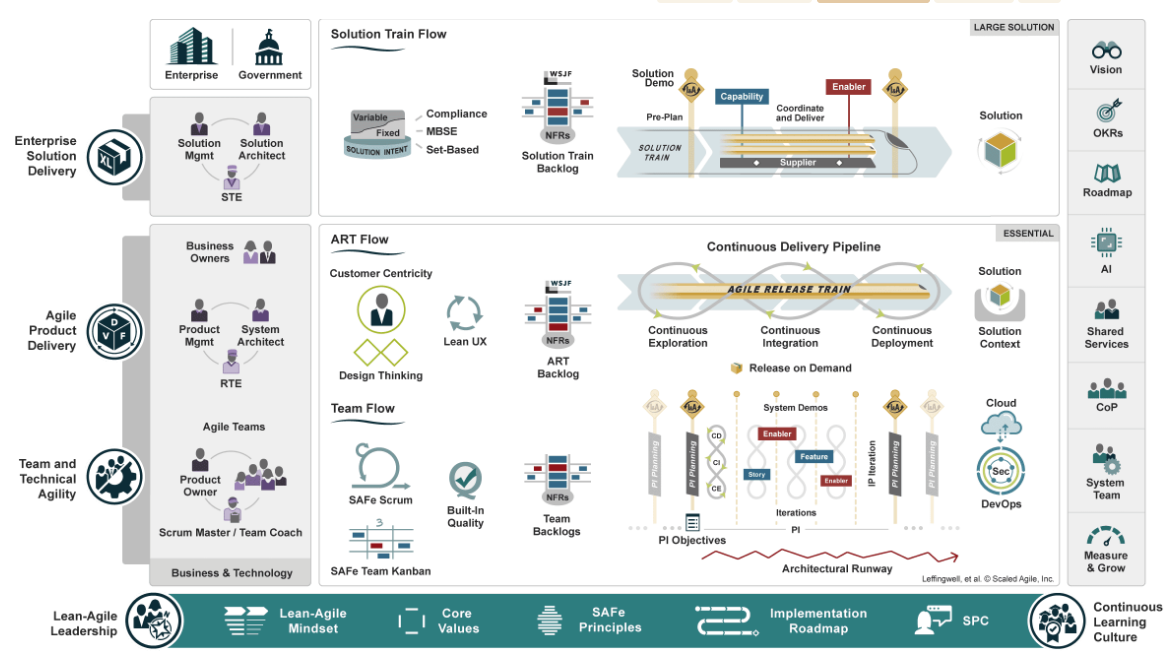
Portfolio:
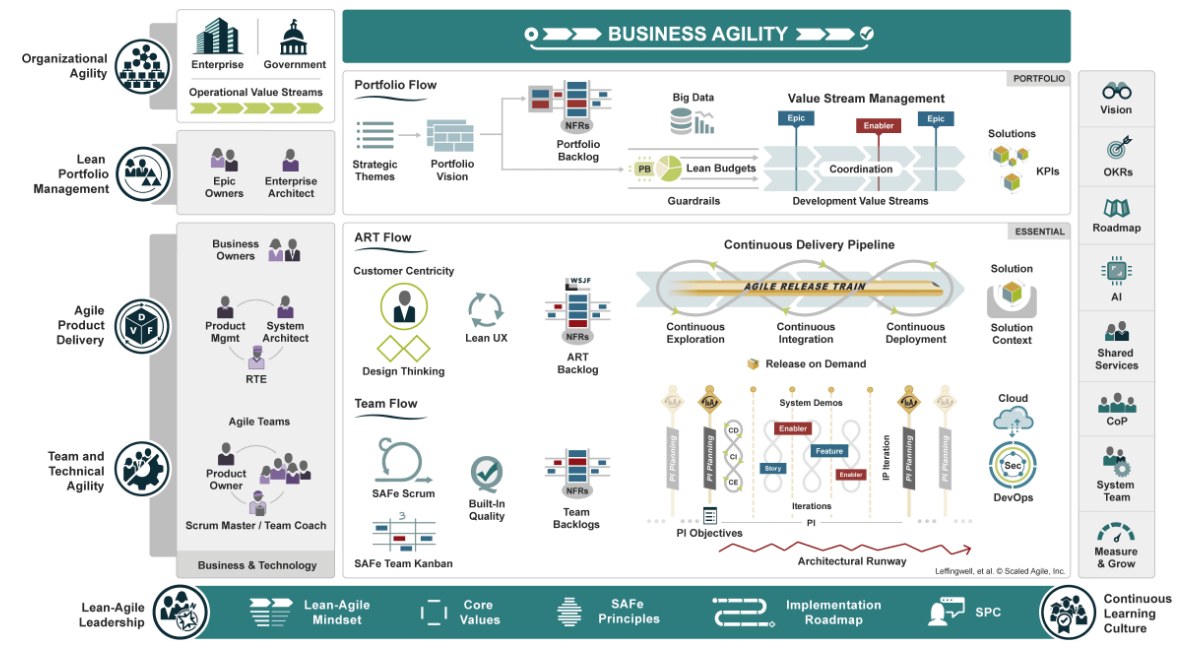
And Full SAFe:
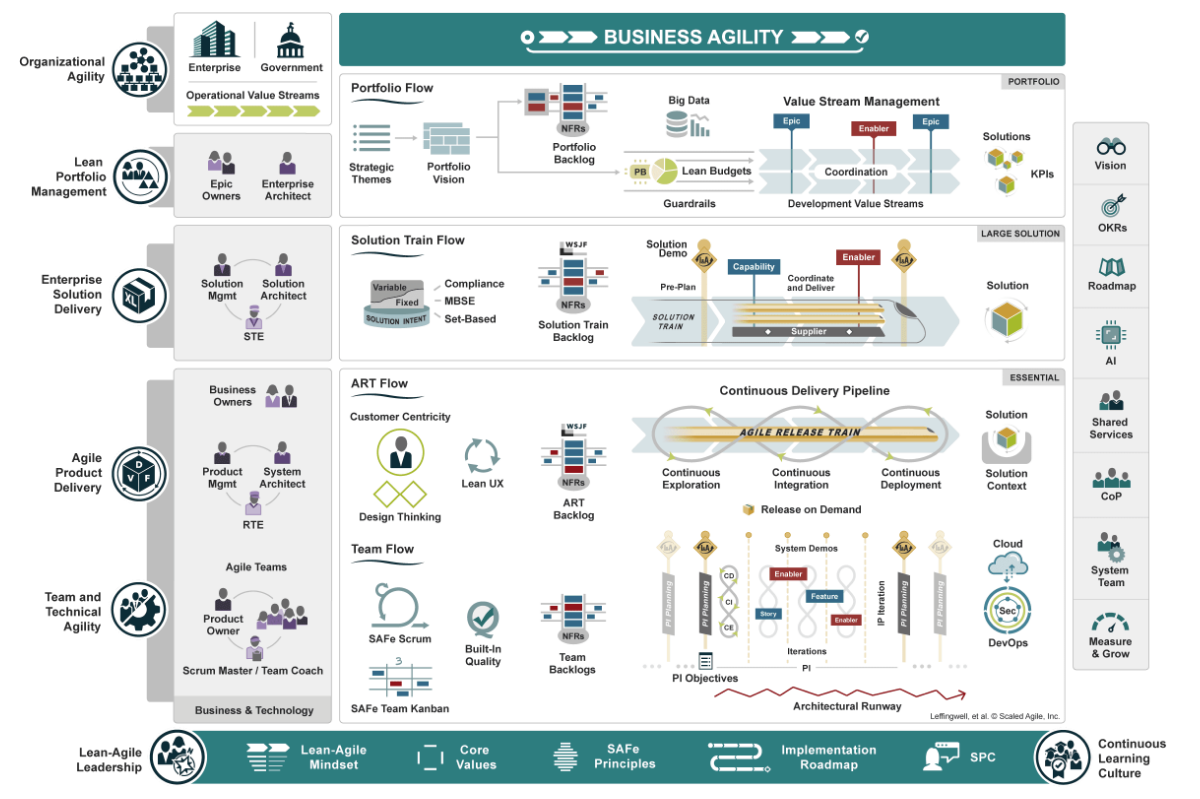
Compare this to Nexus: the scaled Scrum approach created by Scrum.org:
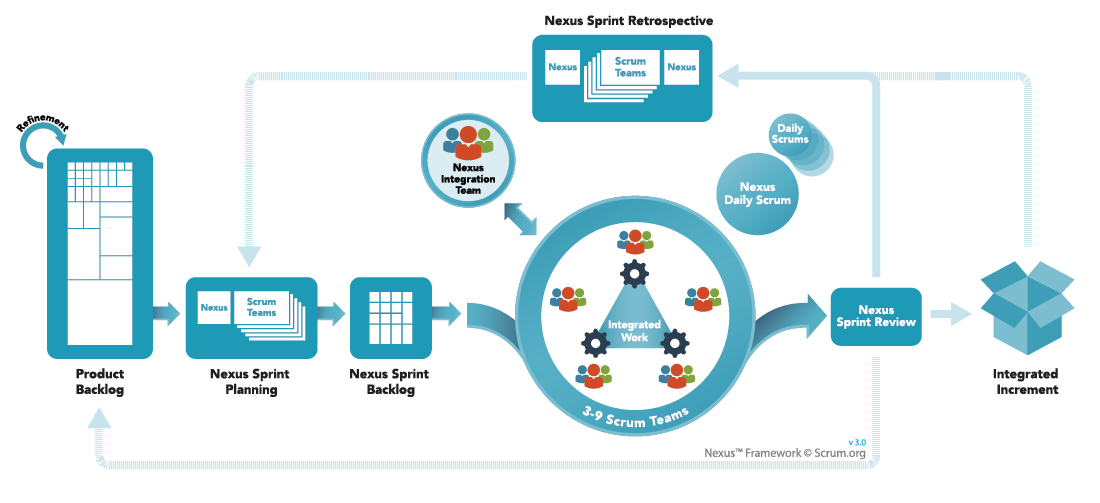
I don’t know about you, but I’d got with the latter. Ok, we can argue, that SAFe is for big enterprises with a lot of complexity. They have a lot of hierarchical levels they need to contain within the framework. Great, but I still have a problem.
My first issue with SAFe is that it’s just too complex
Ok, yes, we are working with a big enterprise. But when we talk about complexity, the overall goal is to find ways to reduce that complexity and limit risk.
SAFe, however, only adds another layer of complexity. Just looking at the framework configuration, it’s just overwhelming. Even if you take the essential configuration, it’s too much.
SAFe basically pushes the organization into even higher levels of complexity that will eventually result in pure chaos.
This brings me to the second issue I have with SAFe.
SAFe is very much consulting-focused
Because of how complex it is, you can’t really do it on your own. You must have an expert consultant, or more like a team of consultants, who can
Ok, granted, I do consulting for Scrum implementations. But honestly, my goal is to get the team to self-sustainability. I want to coach the team members so that they can take over the work when I’m gone. I don’t want to stay there forever and become indispensable.
With how complex SAFe is, I’m not sure it’s possible for Scaled Agile implementations. I spent a lot of time learning the model to get ready to the certification, and it was a challenge to get through it.
Speaking of which, let’s talk about the certification exam.
The certification exam is about your ability to learn things by heart
I may not remember what the PSM I exam was like the first time I passed it, but the SAFe exam was just irritating.
I felt that most of the questions just required you to know exactly the wording of each element of the framework by heart. And I don’t mean knowing Scrum Events: Planning, Daily Scrum, Review and Retrospective.
No, I mean like knowing that Learning Organization dimension requires personal mastery, team learning, mental models, shared vision, and systems thinking. And that Continually Evolve Live Systems dimension is part of the Entreprise Solution Delivery competency.
These are just tiny examples. But you have to know the whole Full SAFe diagram by heart.
It felt that the exam was just testing your memory capacity, rather than your understanding of the key concepts.
The vocabulary in SAFe is unnecessarily complex
Do you know that Rockwell Retro Encabulator video?
The whole model seems like it. I can understand the general premise of the points made (not for the encabulator video, mind you), but the language is making those concepts so complex.
Like that example, I gave you of “continually evolve live systems”. This sounds so grand and fancy. But basically, it means: continue to maintain and improve products you already deployed.
Yep, it’s that simple. Gee, just call things what they are!
Apart from unnecessary complex vocabulary, SAFe suffers from a lot of repetition
Repetition is NOT a path to mastery in this case. What I mean by repetition, is that the model is artificially bloated out of proportion by constant recall of the same key concepts, values, and principles.
For example, continuous deployment and delivery is mentioned in the model multiple times under different competencies and dimensions. At the very minimum it comes up in Entreprise Solution Delivery and Agile Product Delivery. Agile leadership principles are repeated pretty much everywhere, especially in the Lean-Agile Leadership, obviously, and Continuous Learning Culture.
Again, these are just a couple of examples that I was able to gather in my mind quickly. But as I was reviewing the course material, I was getting bored of hearing the same points under different wording and different parts of the model.
And now let’s jump into my biggest issue with Scaled Agile Framework
SAFe improper use of other frameworks and methods
If you look over the Scaled Framework, you will quickly be greeted with all the usual suspects: Scrum, Kanban, DevOps, XP. Which is absolutely fine! There are lots of practices you can implement to help in your agile implementation. You don’t have to stick to one thing because it’s probably not going to be enough anyway.
The problem arises when those frameworks are used in their name only, and everything else about them is changed to whatever SAFe decided it needed it to be.
Take Scrum, for example. SAFe states that Agile Teams use Scrum to deliver. But then the language changes to Iteration instead of Sprint, Daily Stand-up instead of Daily Scrum, Inspect & Adapt meeting instead of Retrospective. In addition, it has dedicated time in-between Sprints which just goes completely against the Scrum rule of “once one Sprint ends, the other one starts immediately”.
DevOps also appears only in the name because everything else from it was watered down to continuous delivery, basically. I’m exaggerating a bit, but still, you get the point.
And I’m just thinking to myself: great, take some good Agile practices from different frameworks. But for the love of all things holy, don’t use the terminology incorrectly. It’s like showing someone a picture of a cat and saying that it’s a dog.
In short, I got certified – yay! At least now I can be more confident when speaking about SAFe, especially with people who know the framework in detail.
One positive point is that, in its essence, SAFe is based on Agile values and principles, it is generally aligned with all the good things we want organizations to implement.
But in the end, I feel that it’s a framework aimed at building large consulting demand in big organizations by overcomplicating the simple concepts and probably making it only more difficult to instill the right Agile culture.

